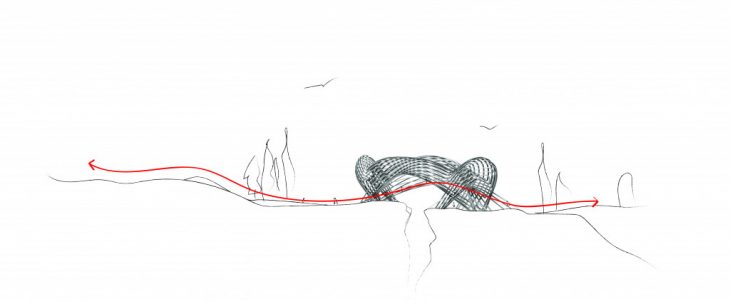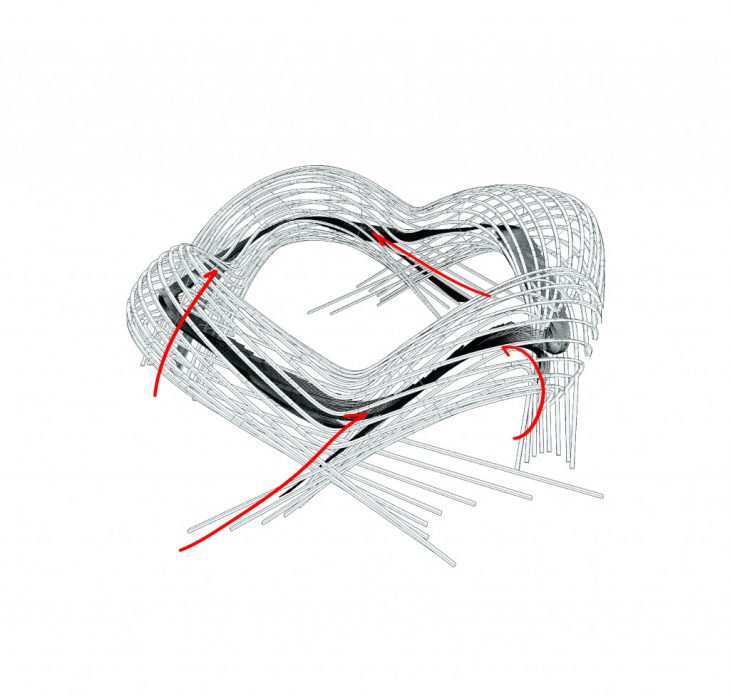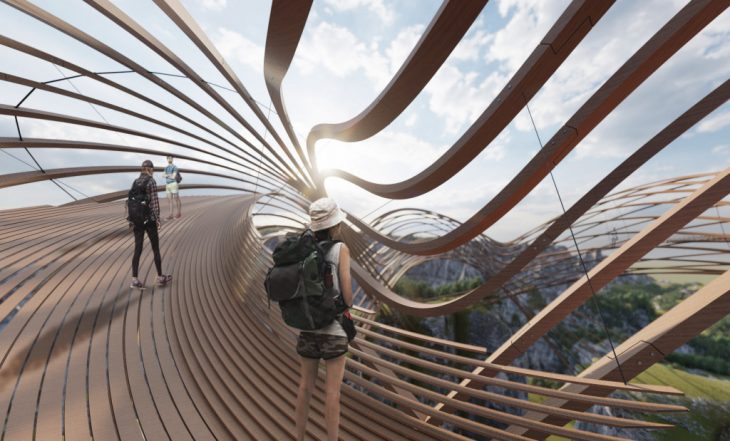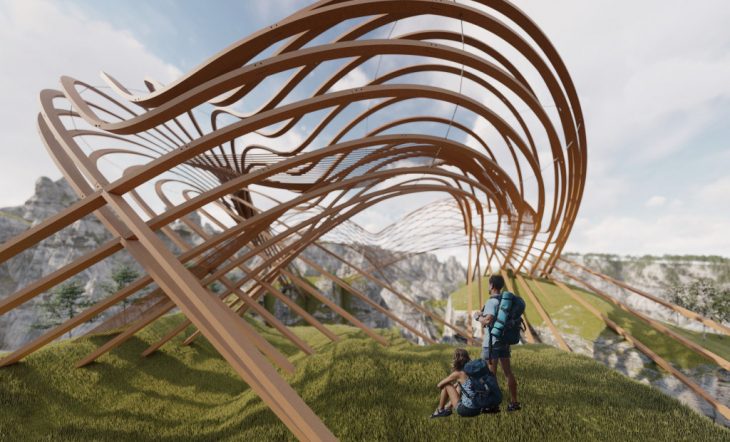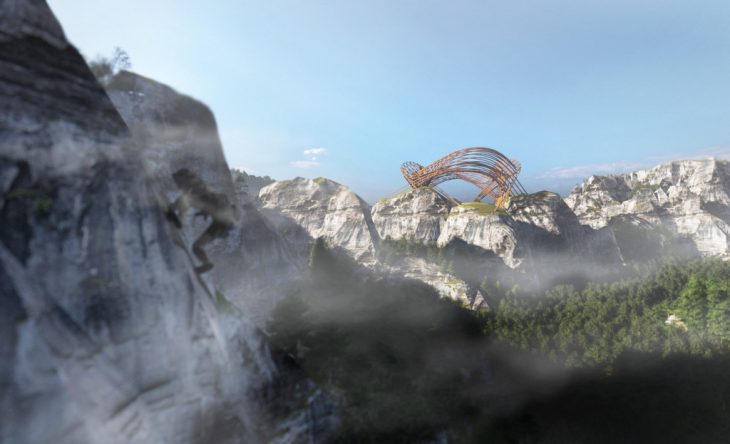
The Bundle is a project created in the digital woodcraft seminar. It focuses on the bending capabilities of wood by creating a parametric structure and analyzing its potential with digital tools.
Design
The basis for our design started off with a twisted torus, its geometry interesting in and of itself. We discovered that by pinching certain sectional vertices and lifting the curves into arcs, it created a tangle of ordered curves that were visually complex but with a logic. We discovered the elements that were created were these long, double curves, great for experimenting with the application of Glulam technology.
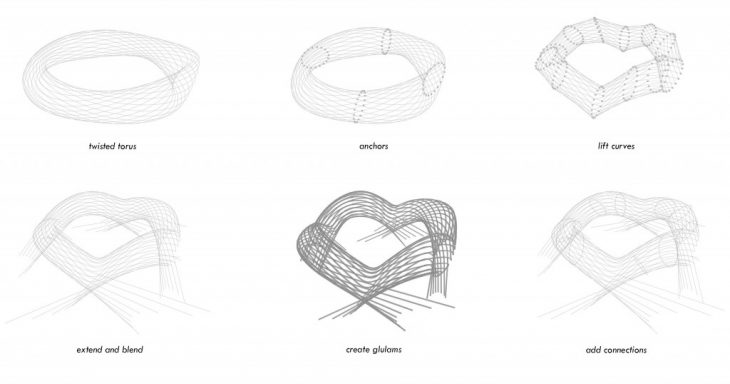
Our model sits atop of a canyon acting as a pedestrian bridge. People flow through the object at the central void as a consequence of the geometry that runs throughout.
The curves are built up of two fundamental elements, (01) arcs that cross at one or two points, or (02) standalone doubly curved elements. For stability, (03) steel cross elements are added to hold the structure for rigidity.
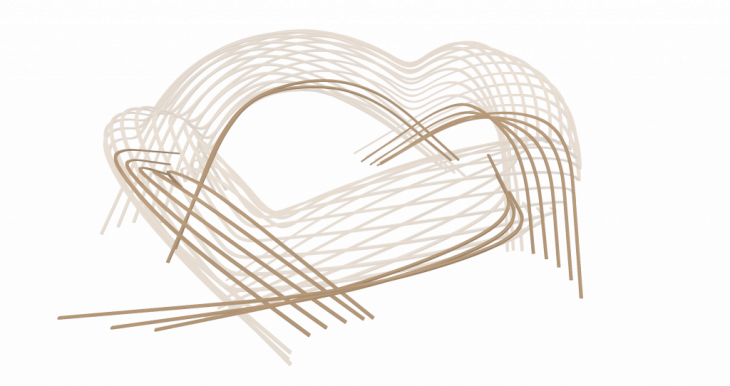
01 crossing arches
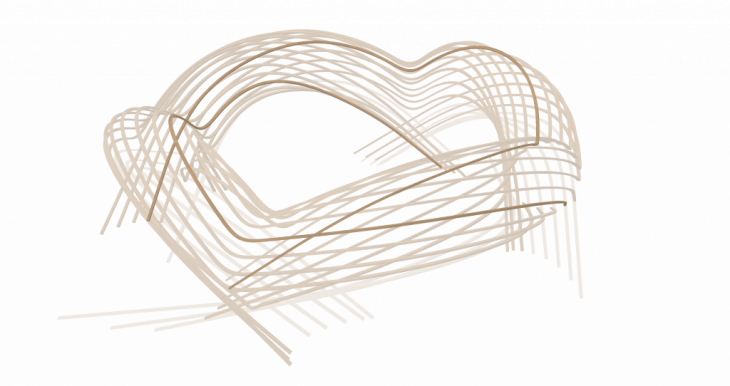
02 single loops
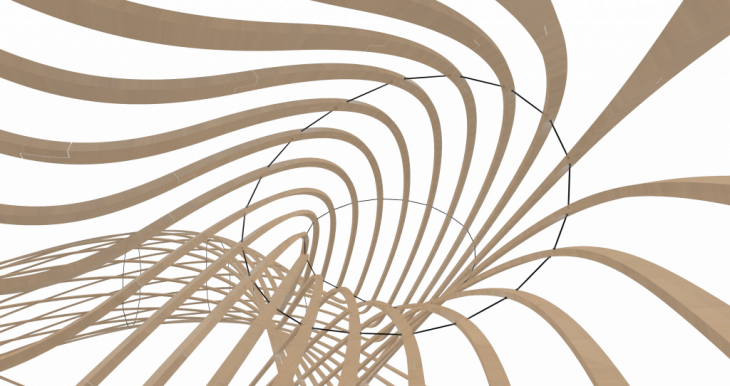
03 cross bracing
Structure
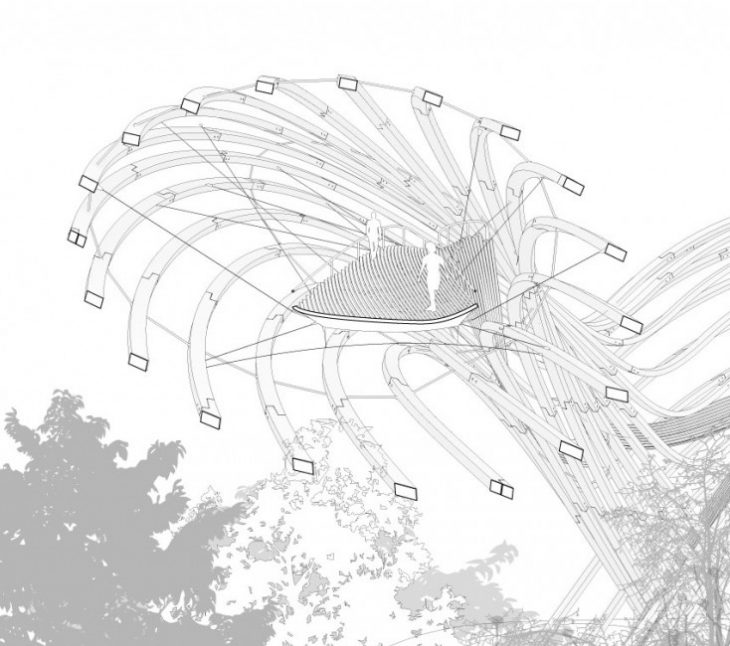
Section diagram with inner circulation
All the beams are split into 10m sections, at 300*570mm with 20*38 lamellas. They are connected to each other by a splice joint, bolted to the central steel element that holds the two parts together.
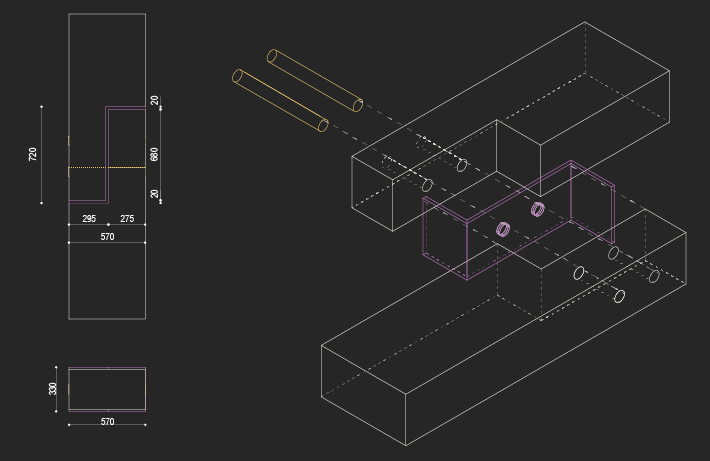
splice joint
In the case of the intersection of the arcs, the joints are connected by the an x shaped steel element. Where they meet the ground, a concrete footing following the arc of the main curve creates a mediation between the colliding materiality of the wood and cliff face.
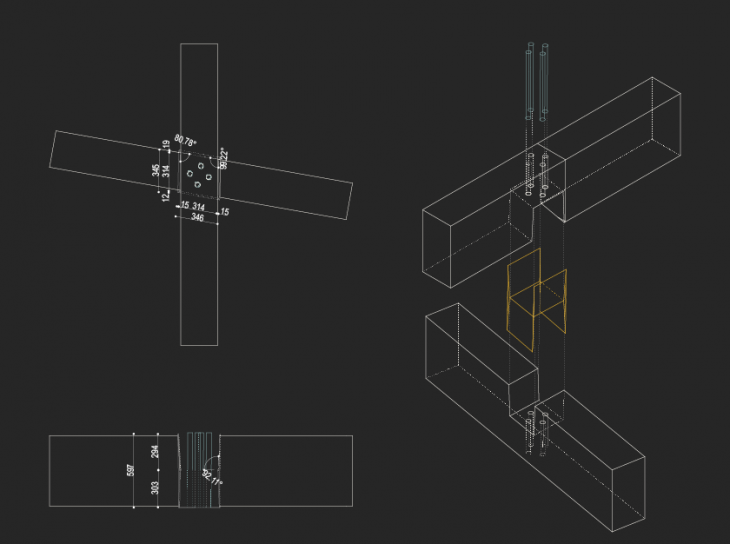
cross joint
Glulam Analysis
The diagram below shows how the glulam elements respond to the curves created. Green shows where the angle of lamella bending is accepted and red shows the problematic areas where the elements have to be reinforced or split in order to keep the curvature. The arches were segmented in 464 elements, with 432 splice joints and 34 cross joints.
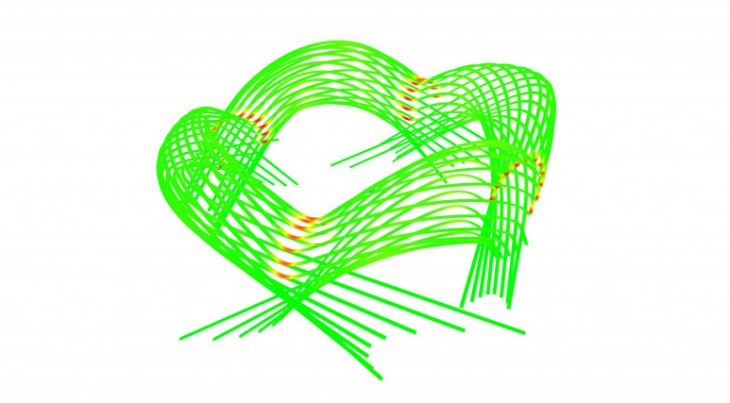
glulam bending analysis
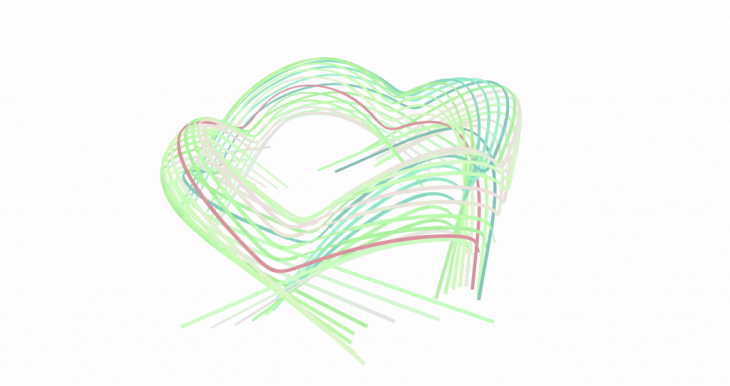
grain direction
We added a surface for circulation that is also supported by the primary Glulam frame. The bridge surface mimics the undulations of the main geometry, but deviates on occasion to create a diversity of experiences for the pedestrian (in some cases they are really close to the top of the geometry where the focus is drawn to the singular element, in other cases further from the wood, where focus is on the larger geometry.
Overall, we wanted to create an experiential bridge atop of the canyon that allows visitors to cross but also encourages people to linger over the amazing landscape.
The Bundle is a project of IAAC, Institute for Advanced Architecture of Catalonia developed in the Master in Advanced Architecture 2019/20 by Students: Robyn Houghton and Lilett Ricaurte with Faculty: Tom Svilans


